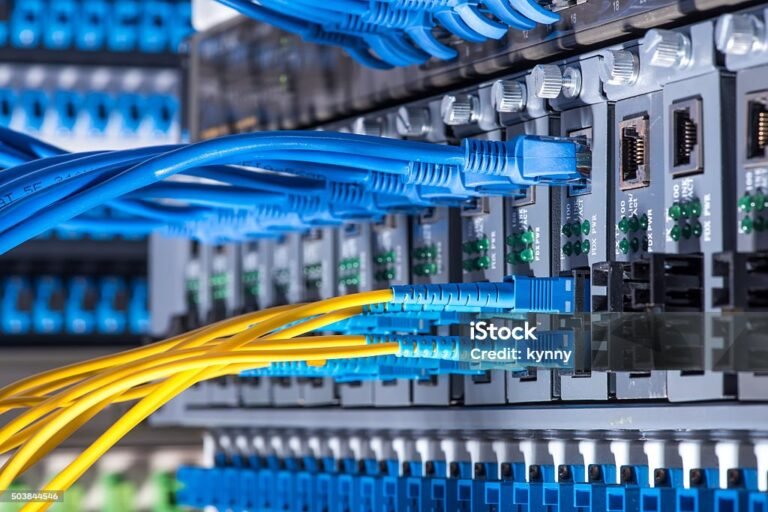The Future of Networking: How SD-WAN Optimizes Performance, Security, and Cost

Software-Defined Wide Area Network (SD-WAN)
As businesses transition to digital-first strategies, the demand for agile, secure, and cost-efficient networks continues to grow. Software-Defined Wide Area Network (SD-WAN) technology has emerged as the gold standard for enterprises seeking to modernize their networking infrastructure. SD-WAN enhances traditional WAN by offering dynamic path control, seamless cloud integration, and centralized management, making it a vital tool for organizations.
This article delves into the features, benefits, and real-world applications of SD-WAN and how it transforms businesses by addressing modern networking challenges.
1. The Need for SD-WAN in a Digital World
The Challenges of Traditional WANs
Legacy WANs rely on static routing protocols and expensive MPLS circuits. With the growing adoption of cloud applications, remote work, and data-heavy services, these traditional systems are often inefficient, inflexible, and costly to maintain.
What Sets SD-WAN Apart
SD-WAN provides a modern solution by enabling intelligent, software-driven traffic management and routing. Unlike traditional WAN, SD-WAN supports multiple connection types (MPLS, broadband, LTE, and 5G) and optimizes performance through real-time analytics.
2. Key Features of SD-WAN
a) Intelligent Path Selection
SD-WAN continuously monitors network traffic and chooses the optimal path for data transmission based on factors like:
- Latency: Prioritizes paths with the least delay.
- Jitter: Reduces fluctuations for smoother data flow.
- Packet Loss: Minimizes disruptions for applications like VoIP and video conferencing.
For businesses relying on real-time services, this feature ensures uninterrupted performance, even during peak traffic.
b) Integrated Security
With cyberattacks becoming more sophisticated, SD-WAN integrates advanced security measures directly into its architecture. These include:
- End-to-End Encryption: Ensures data privacy.
- Firewalls and Intrusion Prevention: Protects against malware and unauthorized access.
- Zero-Trust Security Models: Verifies every user and device accessing the network.
SD-WAN provides consistent security policies across all locations, enabling secure cloud access and compliance with industry regulations.
c) Centralized Management
SD-WAN’s centralized control panel offers:
- A “single pane of glass” interface for monitoring and managing the entire network.
- Easy deployment of updates and policies across multiple locations.
- Simplified troubleshooting and issue resolution.
This unified management reduces operational overhead and enhances network reliability.
3. Benefits of SD-WAN
a) Improved Performance
By dynamically routing traffic, SD-WAN ensures optimal performance for critical applications such as:
- Cloud services (e.g., Microsoft 365, Google Workspace).
- Unified Communications (e.g., Zoom, Teams).
- Real-time data processing.
Studies show businesses achieve up to a 50% improvement in application performance after implementing SD-WAN.
b) Cost Savings
Unlike traditional WANs that depend on expensive MPLS lines, SD-WAN utilizes cost-efficient broadband and LTE connections while maintaining reliability. This results in:
- Reduced capital and operational expenditures.
- Elimination of unnecessary hardware for remote sites.
c) Enhanced Scalability
SD-WAN’s flexibility makes it ideal for businesses with:
- Rapidly expanding operations.
- Seasonal fluctuations in network demand.
- Remote or hybrid workforces.
Adding new sites or scaling resources up and down is seamless, ensuring the network grows with the business.
d) Seamless Cloud Integration
SD-WAN enables direct internet breakouts, reducing latency for cloud-bound traffic. This ensures superior performance for cloud applications without routing through centralized data centers.
4. SD-WAN in Action: Real-World Applications
Use Case 1: Retail Chains
Retailers with multiple locations can benefit from SD-WAN’s centralized management and secure connectivity, enabling real-time inventory updates and faster transaction processing.
Use Case 2: Healthcare Providers
Hospitals and clinics rely on SD-WAN to secure patient data and optimize performance for telemedicine applications, electronic health records, and diagnostic tools.
Use Case 3: Financial Institutions
Banks leverage SD-WAN for secure branch connectivity and to improve the performance of trading platforms and mobile banking apps.
5. Potential Drawbacks and Mitigation Strategies
While SD-WAN offers transformative benefits, businesses may encounter challenges such as:
a) Initial Deployment Costs
Setting up SD-WAN can be costly, particularly for smaller enterprises. However, these costs are offset by long-term savings in operational expenses.
b) Technical Complexity
SD-WAN requires skilled IT personnel for implementation and management. Partnering with managed service providers (MSPs) can address this issue.
c) Compatibility Issues
Integrating SD-WAN with existing systems can be complex. Conducting thorough compatibility assessments before deployment is essential.
6. How SD-WAN Outperforms Competitors
Comparison with Traditional WAN
- Performance: SD-WAN offers intelligent path selection, while traditional WAN relies on static routing.
- Cost: SD-WAN supports affordable broadband connections, reducing dependence on expensive MPLS lines.
- Management: Centralized control makes SD-WAN easier to manage compared to legacy systems.
Comparison with Other Modern Solutions
While SD-WAN faces competition from emerging technologies like Secure Access Service Edge (SASE), it remains the go-to choice for businesses prioritizing network performance and cost-efficiency.
7. Tips for Maximizing the Potential of SD-WAN
a) Invest in Training
Ensure your IT team understands SD-WAN’s features and best practices for deployment and management.
b) Leverage Advanced Features
Take advantage of integrated analytics, application prioritization, and security protocols to enhance performance.
c) Plan for Future Scalability
Design your SD-WAN implementation with future growth in mind to avoid costly upgrades down the line.
d) Partner with Reliable Providers
Choose a reputable SD-WAN vendor that offers robust support and customization options tailored to your business needs.
8. The Future of SD-WAN
As digital transformation accelerates, SD-WAN will continue evolving. Key trends include:
- Integration with 5G: Enabling faster and more reliable connections for edge devices.
- AI-Driven Networks: Automating traffic management and security protocols.
- Convergence with SASE: Merging SD-WAN’s network performance with advanced security features for a unified solution.
Conclusion
SD-WAN is not just a technological upgrade—it’s a strategic investment in the future of networking. Its intelligent path selection, robust security, cost-efficiency, and seamless cloud integration address the limitations of traditional WANs.
By adopting SD-WAN, businesses can build resilient networks capable of supporting modern demands, from cloud applications to hybrid work environments. Whether you’re a growing startup or a global enterprise, SD-WAN equips you to compete, innovate, and thrive in an increasingly connected world.
Author

Michael Davis
Michael Davis is a dedicated content creator at The Bizz Global, focusing on Business, Finance, Technology, and Lifestyle. With a knack for breaking down complex topics, Michael ensures that readers stay informed and engaged with the latest industry trends. His passion for clear and concise writing makes him a trusted voice in the field.






